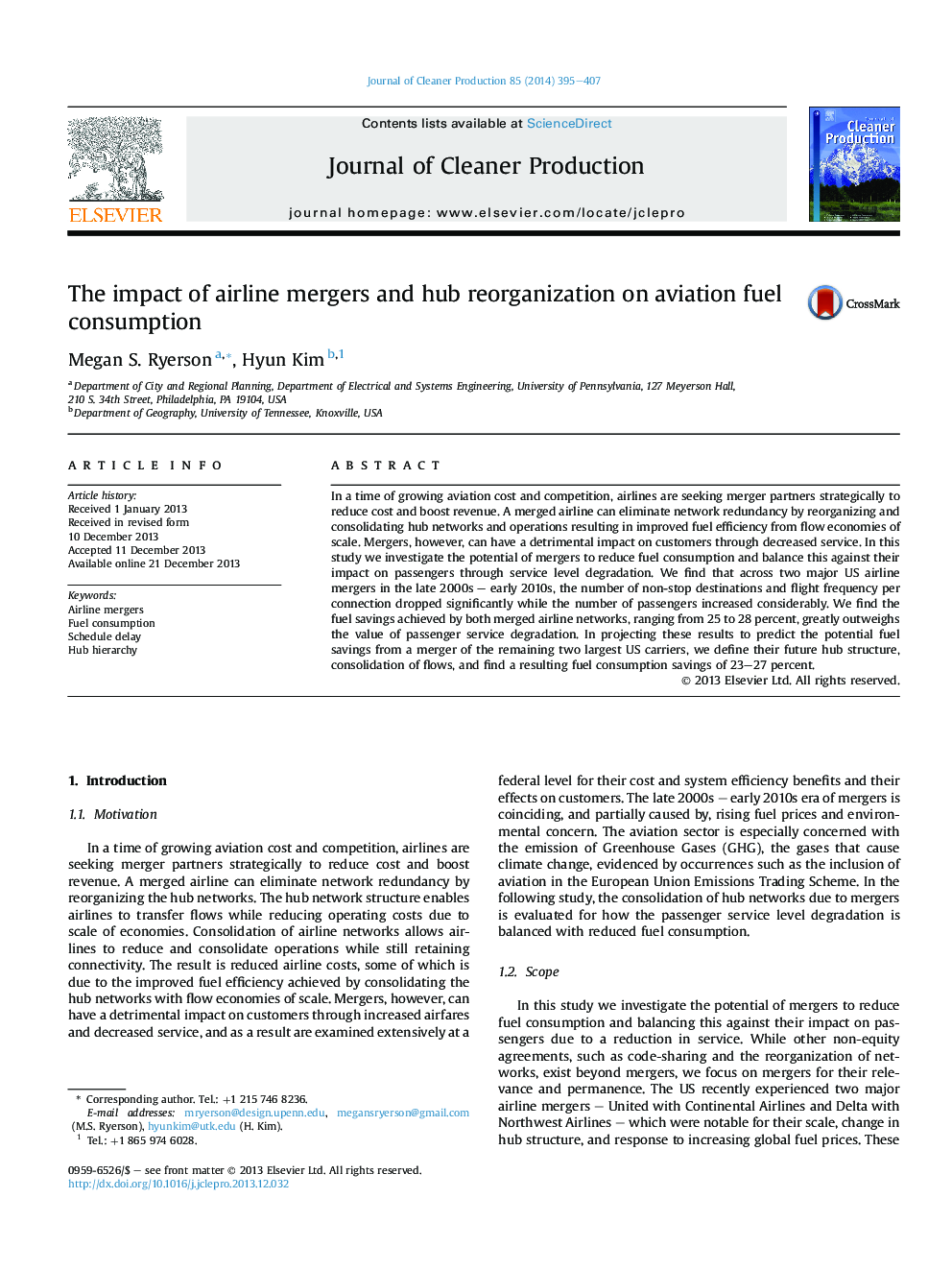| Article ID | Journal | Published Year | Pages | File Type |
|---|---|---|---|---|
| 1744832 | Journal of Cleaner Production | 2014 | 13 Pages |
High lights•Airline mergers eliminate network redundancy through hub hierarchy reorganization.•Airline hub hierarchies pre- and post-merger are established using k-means clustering.•Mergers result in hubs operated more efficiently, operationally and spatially.•A 28% fuel reduction results from hub hierarchy shifts, outweighing service degradation.•An American Airlines/US Airways merger results in a 23% hub operation reduction in fuel.
In a time of growing aviation cost and competition, airlines are seeking merger partners strategically to reduce cost and boost revenue. A merged airline can eliminate network redundancy by reorganizing and consolidating hub networks and operations resulting in improved fuel efficiency from flow economies of scale. Mergers, however, can have a detrimental impact on customers through decreased service. In this study we investigate the potential of mergers to reduce fuel consumption and balance this against their impact on passengers through service level degradation. We find that across two major US airline mergers in the late 2000s – early 2010s, the number of non-stop destinations and flight frequency per connection dropped significantly while the number of passengers increased considerably. We find the fuel savings achieved by both merged airline networks, ranging from 25 to 28 percent, greatly outweighs the value of passenger service degradation. In projecting these results to predict the potential fuel savings from a merger of the remaining two largest US carriers, we define their future hub structure, consolidation of flows, and find a resulting fuel consumption savings of 23–27 percent.
